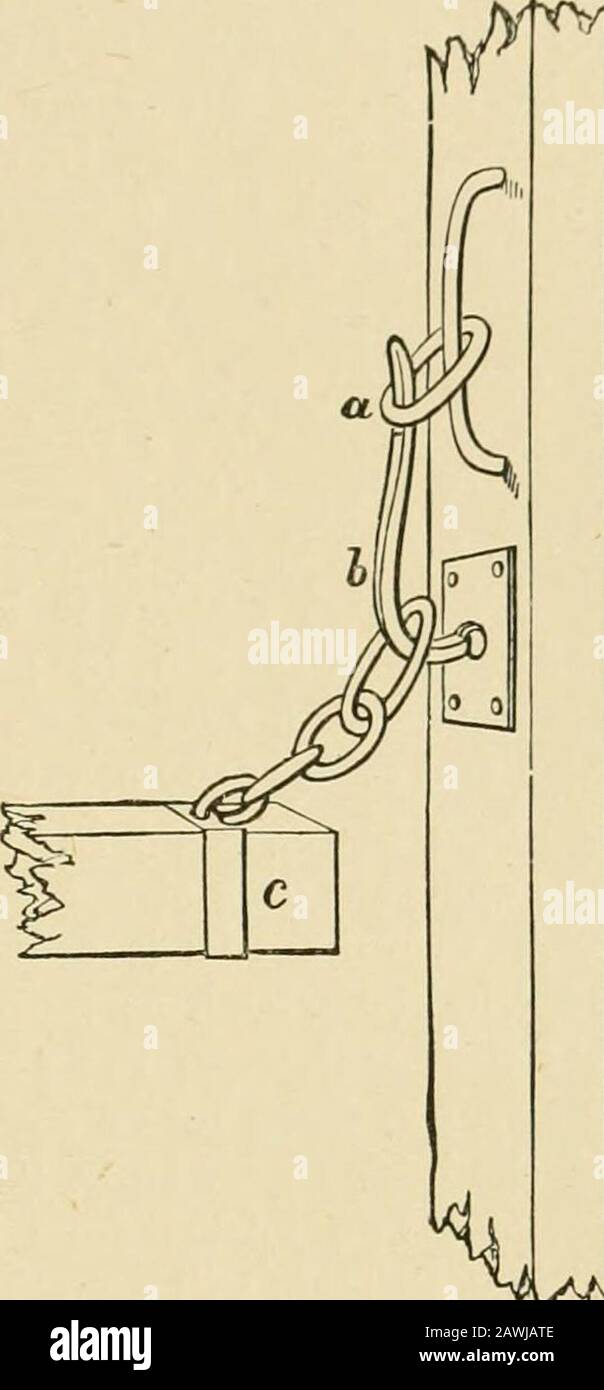The horse in the stable and the field : his varieties, management in health and disease, anatomy, physiology, etc. . ess is an object, all that is necessary is to fix a head and tail-post,and connect these by three strong rails ; inch elm boards are then nailedperpendicularly, and cut at the top to the proper sweep, or ramp, as it iscalled, after which a thin fillet of elm is bent to the shape and nailed on tothe top. Most travises, however, have an ornamental tail-post, and aframed top rail, rebated on the lower edge to receive the boards. In thepresent day iron, however, is substituted for w

Image details
Contributor:
The Reading Room / Alamy Stock PhotoImage ID:
2AWJATEFile size:
7.1 MB (138 KB Compressed download)Releases:
Model - no | Property - noDo I need a release?Dimensions:
1078 x 2318 px | 18.3 x 39.3 cm | 7.2 x 15.5 inches | 150dpiMore information:
This image is a public domain image, which means either that copyright has expired in the image or the copyright holder has waived their copyright. Alamy charges you a fee for access to the high resolution copy of the image.
This image could have imperfections as it’s either historical or reportage.
The horse in the stable and the field : his varieties, management in health and disease, anatomy, physiology, etc. . ess is an object, all that is necessary is to fix a head and tail-post, and connect these by three strong rails ; inch elm boards are then nailedperpendicularly, and cut at the top to the proper sweep, or ramp, as it iscalled, after which a thin fillet of elm is bent to the shape and nailed on tothe top. Most travises, however, have an ornamental tail-post, and aframed top rail, rebated on the lower edge to receive the boards. In thepresent day iron, however, is substituted for wood; but as, when cast, it isvery liable to break, it should be wrought for the ramps and cills. Animproved form of ramp is that made as a gi-ating with a straight rail about4 ft. from the floor, connected with the ramp by wrought-iron upright bars.Foreigners like cast-iron ornamental scrolls and panels, but these are dirt-catchers, weak and dangerous. This grating ramp assists ventilation andthe horses social instinct. The following are the prices of these articles, varying with the degree of ornamentation :—. [yti d. £ s. d. Wrouglit-irou stable posts, with ornamental cast tops, eacli from 10 Wroiight-iron ramp, each from 0 12 Ventilating ramp with patent bars 2 7 VVrought-iron cill, each from 0 7 0 to 2 7 0 to 0 15 6 to 5 0 6 to 0 12 234 THE HORSE Thus a plain iron frame-work, consisting of wrought-iron post, ramp, andcill, may be obtained for about 21., to which must be added the expenseof boarding both sides, which will come to about 20^. in deal or elm, exclusiveof the labour, being nearly double the cost of wooden posts and rails, putup in a correspondingly plain way. The length of the travis should be9 ft., or if the horses are 16 hands or more, the travis may be 10 ft. longwith advantage. No travis should be less than 6 ft. 8 in. in height atthe head, and 4 ft. 6 in. or 5 ft. at the tail-post. If lower than this, thehorses can bite each other over the head, or kick